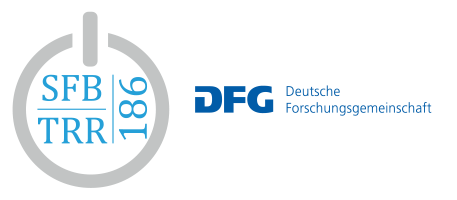
Prof. Dr. Tobias Dick

Deutsches Krebsforschungszentrum (DKFZ)
Im Neuenheimer Feld 280
69120 Heidelberg
Phone: +49 (6221) 42-2320
E-mail: t.dick@dkfz.de
Department Head
2019 Highly Cited Researcher 2019 (Cross-Field) - Web of Science (Clarivate)
2017 - ERC Advanced Grant
2017 - Society for Free Radical Research Europe Basic Science Award
2009 - Chica- and Heinz-Schaller-Award for young scientists
2004 - Marie Curie Excellence Grant
1998 - 2000 - Postdoctoral fellowship from the German Research Council (DFG)
1989 - 1994 - Scholarship from the 'Studienstiftung des Deutschen Volkes'
University training and degree
1994 - Diploma thesis with Hans-Georg Rammensee at the German Cancer Research Center, Heidelberg
1989 - 1994 - Study program in Biochemistry, Freie Universität Berlin
Advanced academic qualifications
2009 - Habilitation in Biochemistry, Faculty of Biosciences, Heidelberg University
1997 - PhD (Dr. rer. nat.) in Biochemistry, FU Berlin (summa cum laude); carried out in the laboratory of Hans-Georg Rammensee (German Cancer Research Center, Heidelberg and Institute for Immunology, University of Tübingen)
Postgraduate professional career
2010 - Head of Divison 'Redox Regulation', German Cancer Research Center, Heidelberg
2003 - 2009 - Independent Junior Group Leader, German Cancer Research Center, Heidelberg
1998 - 2002 - Postdoctoral Researcher, Howard Hughes Medical Institute, Yale University, New Haven, USA
Coordinating functions and editorial work
2012 – present DKFZ representative and contact person for the “German Society for Biochemistry and Molecular Biology” (GBM)
2020 – 2022 Coordinator of DFG priority program SPP1710 “Dynamics of Thiol-Based Redox Switches in Cellular Physiology”
2014 - 2019 - Co-founder and vice coordinator of the DFG-funded priority program SPP1710 “Dynamics of Thiol-Based Redox Switches in Cellular Physiology”
2011 - 2017 - Co-founder and vice coordinator of the Study Group ‘Redox Biology’ within the “German Society for Biochemistry and Molecular Biology” (GBM)
Most important publications
-
Talwar, D., Miller, C. G., Grossmann, J., Szyrwiel, L., Schwecke, T., Demichev, V., Mikecin Drazic, A.-M., Mayakonda, A., Lutsik, P., Veith, C., Milsom, M. D., Müller-Decker, K., Mülleder, M., Ralser, M. & Dick, T. P. The GAPDH redox switch safeguards reductive capacity and enables survival of stressed tumour cells. Nature Metabolism 5, 660-676 (2023). https://doi.org/10.1038/s42255-023-00781-3
-
Barayeu, U., Schilling, D., Eid, M., Xavier da Silva, T. N., Schlicker, L., Mitreska, N., Zapp, C., Gräter, F., Miller, A. K., Kappl, R., Schulze, A., Friedmann Angeli, J. P. & Dick, T. P. Hydropersulfides inhibit lipid peroxidation and ferroptosis by scavenging radicals. Nature Chemical Biology 19, 28-37 (2023). https://doi.org/10.1038/s41589-022-01145-w
- Stöcker, S., Maurer, M., Ruppert, T. & Dick, T. P. A role for 2-Cys peroxiredoxins in facilitating cytosolic protein thiol oxidation. Nature Chemical Biology 14, 148-155 (2018). https://doi.org/10.1038/nchembio.2536
- Morgan, B., Van Laer, K., Owusu, T. N. E., Ezeriņa, D., Pastor-Flores, D., Amponsah, P. S., Tursch, A. & Dick, T. P. Real-time monitoring of basal H2O2 levels with peroxiredoxin-based probes. Nature Chemical Biology 12, 437-443 (2016). https://doi.org/10.1038/nchembio.2067
- Peralta, D., Bronowska, A. K., Morgan, B., Dóka, É., Van Laer, K., Nagy, P., Gräter, F. & Dick, T. P. A proton relay enhances H2O2 sensitivity of GAPDH to facilitate metabolic adaptation. Nature Chemical Biology 11, 156-163 (2015). https://doi.org/10.1038/nchembio.1720
- Sobotta, M. C., Liou, W., Stöcker, S., Talwar, D., Oehler, M., Ruppert, T., Scharf, A. N. D. & Dick, T. P. Peroxiredoxin-2 and STAT3 form a redox relay for H2O2 signaling. Nature Chemical Biology 11, 64-70 (2015). https://doi.org/10.1038/nchembio.1695
- Morgan, B., Ezeriņa, D., Amoako, T. N. E., Riemer, J., Seedorf, M. & Dick, T. P. Multiple glutathione disulfide removal pathways mediate cytosolic redox homeostasis. Nature Chemical Biology 9, 119-125 (2013). https://doi.org/10.1038/nchembio.1142
- Albrecht, Simone C., Barata, Ana G., Großhans, J., Teleman, Aurelio A. & Dick, Tobias P. In Vivo Mapping of Hydrogen Peroxide and Oxidized Glutathione Reveals Chemical and Regional Specificity of Redox Homeostasis. Cell Metabolism 14, 819-829 (2011). DOI: 10.1016/j.cmet.2011.10.010
- Gutscher, M., Pauleau, A.-L., Marty, L., Brach, T., Wabnitz, G. H., Samstag, Y., Meyer, A. J. & Dick, T. P. Real-time imaging of the intracellular glutathione redox potential. Nature Methods 5, 553-559 (2008). https://doi.org/10.1038/nmeth.1212
- Kienast, A., Preuss, M., Winkler, M. & Dick, T. P. Redox regulation of peptide receptivity of major histocompatibility complex class I molecules by ERp57 and tapasin. Nature Immunology 8, 864-872 (2007). https://doi.org/10.1038/ni1483
